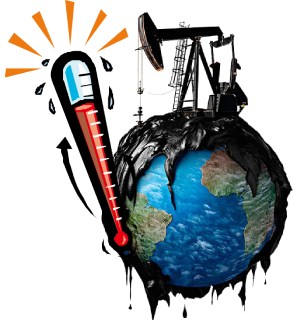Weather patterns have taken a turn for the worse all over the world, threatening to change life as people know it. As people come to terms with the new normal, it's time to focus on what this could mean for Australia, a country whose weather was once as predictable as the sunrise. Has anything changed, and if so, what to look at?
Australia is a huge country, with each region exposed to different elements (including winds and geographical features), thus resulting in climatic differences across its regions. But even with these variations, for many centuries, Australians knew what to expect in each season of each year, as follows:

While this template was easy to follow, things have slowly changed, resulting in climate variations across Australia's regions. So, what's new in the Australian landscape?
In the past, Australians could predict the weather based on previous years as things were largely the same. The dry regions were hot and dry, the tropical regions had amazing beach weather for vacations, and the south was perfect for anyone who wanted a cool winter. But then, things slowly started changing, indicating that the previous climate templates were no longer foolproof. Let's consider the tell-tale signs:
Increasing temperatures
Global warming is a huge issue in the world. In Australia, the issue is undeniable, as the average surface air temperature has increased by over 1.4°C in the last century. Heatwaves have become a common occurrence in the region - unfortunately, these often result in the loss of lives. Victoria once experienced bushfires so severe that over 150 people died.
Flooding
There have been two changes in this regard. The first refers to the ocean levels. As the temperatures have gone up, the water levels have also increased, encroaching on the land and forcing people to move to higher regions. Fears are rife that if this continues, more lives and property will be at risk. The second issue refers to the unpredictable rain on the land. Sometimes, the rainfall is so much that it floods the country, which also has devastating effects on people and infrastructure.
Droughts
In the past, people could plan their farming based on previous rainfall patterns. But times have changed, and sometimes, the rainfall-prone areas do not receive as much rainfall as they expect, resulting in reduced productivity.
Marine ecosystem changes
Many people travel to Australia to explore its coral reefs. But something has been threatening this ecosystem - as the sea surface temperature has risen, coral bleaching has increased, affecting most coral reefs, including those in the Great Barrier Reef.
Unprecedented weather
Australia has made several headlines in international news owing to the effects of climate change. Examples of these include storms, droughts, and bushfires. One of the biggest highlights was the bushfire season when the country was constantly ravaged by bushfires. In this period, the fire spread through over 18 million hectares, displacing billions of animals and destroying thousands of homes.
Based on recent Australian climate reports, these events are just the tip of the iceberg.. Australia is at risk of more frequent and devastating weather changes in the coming years if it does not act on time.
Climate change has significant effects on the people and economy. However, to rectify the situation and avert more crises, we must understand what triggered the changes. So, what was it?

More industries:
As the country has geared up on its industrial growth, it has also increased its greenhouse gas emissions. Much of this emission comes from the burning of fossil fuels, which is how many industries power their operations. Unfortunately, while this results in more efficiency in internal operations, gases that are a byproduct of the burning end up in the atmosphere, where they trap heat, resulting in increasing global warming.
Land use changes:
In the past, people preserved natural forests and found ways to build around them. However, with the increasing population, land uses have changed, prompting developers to clear forests for urban development, which reduces the number of trees that can recapture carbon dioxide from the atmosphere.
Modern agriculture:
Traditional farming has always been good for the environment and the people. But to keep up with the increased demand for food, many farmers have opted to use chemicals to boost their production, which releases gases into the atmosphere, contributing to more climate changes.
The current status of Australia with respect to climatic conditions seems to be tilted toward more frequent and intense extreme weather events such as bushfires, floods, and drought. Scientists and environmental organizations(ACF) have continued to ring the alarm regarding the climate impacts of these extreme events on Australia's ecosystems, agriculture, and urban areas. Reports indicate that communities are still striving to adjust to the new climate conditions while adopting new policies and strategies for improving resilience.
Gone are the times when Australians could predict the weather by looking at a calendar. Now, their livelihoods are at risk of permanent changes if they do not take the necessary steps to undo the harm they have caused the environment in the last few centuries.